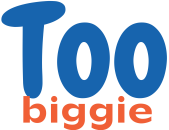Leather goods are some of the most sought-after favorites to possess. They are much more durable and forever trending. Some of the world’s most high-end and luxurious brands like Louis Vuitton, Gucci, Giorgio Armani, Burberry, Prada, Dolce, Gabbana, etc., are into the production of leather goods.
Their products include especially leather handbags, leather belts, leather wallets, and leather shoes, and these brands are in frequent contact with leather goods importers from all across the world.
However, the key players in the leather goods market include sports brands like Adidas AG, Nike, Puma, and others like Woodland, Timberland LLC, Fila, Knoll, New Balance Athletics, and Johnston & Murphy.
Global Statistics And Market Value Of Leather Goods
It is not astounding that the valuation of the leather goods industry worldwide was $394.12 billion in 2020. Despite the pandemic that led to the global shutdown and temporarily terminated most functional and operational activities, including retailing, the demand for leather goods did not suffer a significant setback.
The leather goods buyers continued their trade with an eventual move towards a growing market after the first two quarters of 2020.
The reason for this is an ever-growing standard of living among people and the great aesthetic value attached to leather commodities. Moreover, leather goods have a longer lifespan owing to them being crack-proof, fire-proof, and dust-proof.
Rising consumer disposable income, fast-changing fashion trends, easy access to all kinds of goods due to increasing global trade across nations are also some inevitable reasons.
As a result, the Compound Annual Growth Rate (CAGR) between 2021 and 2028 is expected to be 5.9%. The market size value in 2021 is $407.92 billion, and the revenue forecast made for 2028 is $624.08 billion.
The synthetic leather or artificial leather market is expected to grow at a CAGR of 5.75% between 2020 and 2025 and is expected to reach $8,441 million by 2025.
Sources Of Leather Commodities
Leather goods like upholstery, furniture, shoes, bags, fashion accessories, decoration items, clothing, hats, etc., can be made from various kinds of leather. Among these, the footwear segment leads the industry with 47%, as seen in 2020. The leather used is derived from multiple sources and materials from tanning hides and skin of animals like cowhide, buffalo hide, goatskin, deerskin, sheepskin, hog skin, etc.
Among the two kinds of leather available, the genuine leather segment dominates the leather market with about 55% market share in 2020. Synthetic leather is derived from Polyurethane (PU) and Polyvinyl Chloride (PVC). PU is preferred over PVC due to its eco-friendly nature. PVC, on the other hand, emits dioxins.
Regional Growth In The Leather Industry
North America dominates the global market in terms of leather goods consumption. The biggest consumer is the United States of America, followed by Canada and Mexico. The revenue share of the continent is 34% of the total global market.
This helps authentic and reliable importers like Klipper USA benefit from the situation, especially as North America itself is the biggest leather consumer.
The Asia Pacific has become the fastest-growing market in terms of industrial growth and consumption of leather products, having the largest number of leather goods importers. It includes countries like China, India, Bangladesh, and Pakistan as its major players.
In September 2019, the Forever Leather Fashion show was organized in China. It invited designers from all across the world, and a display of premium leather-made goods like cross-stitched jackets, trench coats, leather boots, duffle bags, etc., was made.
All these events, coupled with increasing high-net-worth individuals (HNVIs) and ultra-high net worth individuals (UHNVIs), will boost the leather industry in China and, as a chain reaction, the world itself in the current time and post 2021.
China has the most significant number of leather goods buyers in the world. It alone accounts for 16.5% of the world’s total leather imports.
In India, the government helped the industry grow by reducing the excise duty to 6% from 12% and allowing 100% Foreign Direct Investment via automatic routes.
Bangladesh and Pakistan are the major suppliers of raw materials in the Asia Pacific region. Bangladesh claims to have opened 15-20 leather products and footwear manufacturing plants almost every year due to rising demand.
Another factor that boosts the market is the rising number of health and fitness freak individuals and even athletes. They help upsurge the demand for leather commodities, allowing premium sports brand owners like Adidas and Nike to fuel the manufacture of sportswear leather products.
The Future Of Leather Industry
All the factors, as mentioned earlier, help importers like Klipper USA, and even exporters spike their leather trades and bring an overall increase in their business.
The leather industry has witnessed a successful surge in the past few years, whether it be for the luxurious aesthetic appeal it adds or any other reason. And the graph is expected to grow exponentially in the coming years as well.
